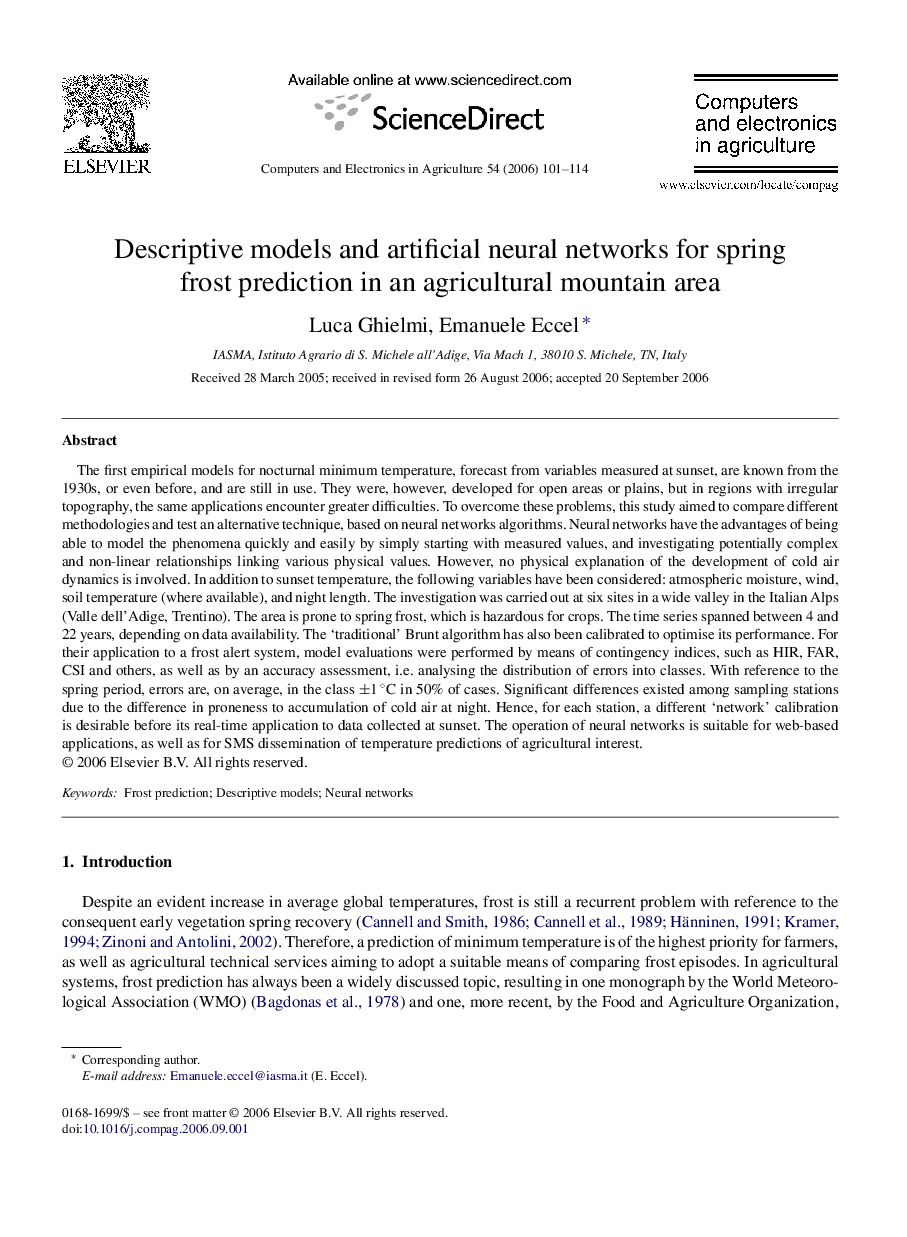| کد مقاله | کد نشریه | سال انتشار | مقاله انگلیسی | نسخه تمام متن |
|---|---|---|---|---|
| 85450 | 158949 | 2006 | 14 صفحه PDF | دانلود رایگان |

The first empirical models for nocturnal minimum temperature, forecast from variables measured at sunset, are known from the 1930s, or even before, and are still in use. They were, however, developed for open areas or plains, but in regions with irregular topography, the same applications encounter greater difficulties. To overcome these problems, this study aimed to compare different methodologies and test an alternative technique, based on neural networks algorithms. Neural networks have the advantages of being able to model the phenomena quickly and easily by simply starting with measured values, and investigating potentially complex and non-linear relationships linking various physical values. However, no physical explanation of the development of cold air dynamics is involved. In addition to sunset temperature, the following variables have been considered: atmospheric moisture, wind, soil temperature (where available), and night length. The investigation was carried out at six sites in a wide valley in the Italian Alps (Valle dell’Adige, Trentino). The area is prone to spring frost, which is hazardous for crops. The time series spanned between 4 and 22 years, depending on data availability. The ‘traditional’ Brunt algorithm has also been calibrated to optimise its performance. For their application to a frost alert system, model evaluations were performed by means of contingency indices, such as HIR, FAR, CSI and others, as well as by an accuracy assessment, i.e. analysing the distribution of errors into classes. With reference to the spring period, errors are, on average, in the class ±1 °C in 50% of cases. Significant differences existed among sampling stations due to the difference in proneness to accumulation of cold air at night. Hence, for each station, a different ‘network’ calibration is desirable before its real-time application to data collected at sunset. The operation of neural networks is suitable for web-based applications, as well as for SMS dissemination of temperature predictions of agricultural interest.
Journal: Computers and Electronics in Agriculture - Volume 54, Issue 2, December 2006, Pages 101–114